Today more than ever, IoT connectivity is enabling all types of physical sensors to send their data directly to virtual dashboards with close to no human interaction.
This is only possible thanks to recent advances in IoT technologies such as cellular IoT and LPWAN (Low-Power Wide Area Networking) which are radically changing the way sensors are used; from occasional measurements to continuous, real-time remote monitoring across multiple industrial and consumer applications.
With that said, sensors aren't exactly a new thing.
Used mainly to measure variables from the real world such as temperature or pressure, early device adaptations were traced all the way back to the 1500's.
As Kelvin Tech points out in one of their blog posts:
Temperature measurement has been around for a long time, dating as far back as 150 A.D. But, it is estimated that the real science of thermometers didn’t evolve until the 1500’s. Over the years, different types of thermometers were developed.
That's 400+ years ago!
Humans have always felt the need to measure things faster, more accurately, and more efficiently than with previous adaptations. It's in our nature.
And it's exactly why IoT sensors are on the rise.
Table of Contents
What Is An "IoT" Sensor Anyway?
Before IoT was even a thing, there were already many types of measurement devices available on the market, including thermometers, magnetometers (of which compasses are a notable example), altimeters, and many, many more.
The list never ends.
Sensors used within these devices are meant to detect, measure and report one real-world variable at a time. Their entire purpose is to help us understand the world around us in a measurable, universal way that "anybody" can understand.
Ever seen a pilot's cockpit before?
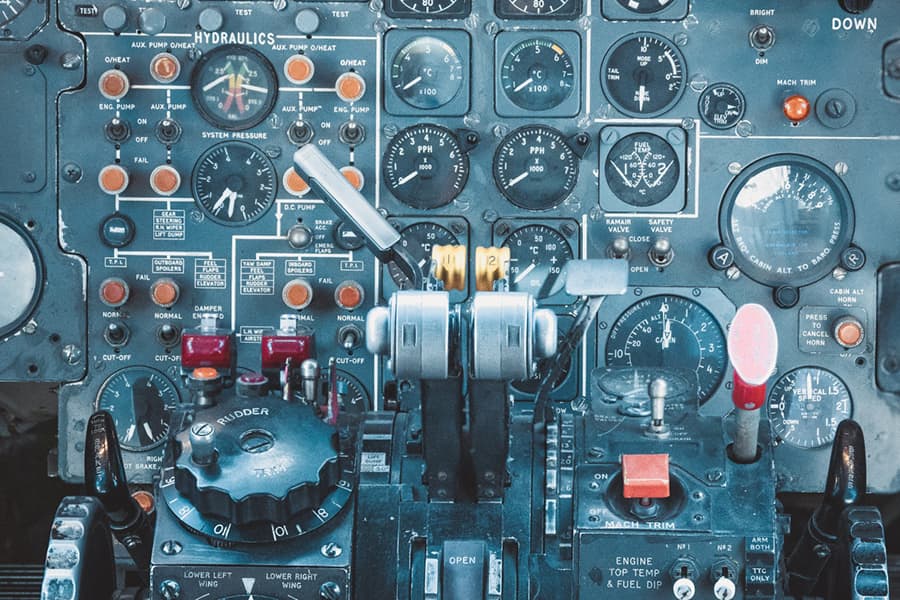
These dashboards are filled with flight instruments reporting variable data from all types of sensors. A few examples are fuel levels, system pressure, and so on.
The idea behind next-generation IoT sensors is that through the use of so-called IoT modules, these devices can aggregate and send their data directly to an IoT dashboard, making it much faster and easier to make important decisions.
Predictive maintenance is one of the key areas where IoT sensors are promising to change the way manufacturing and industry are operated. Other interesting use cases are rising in popularity as well.
Below, we're going to look at 12 IoT sensor types that are enabling these use cases as well as a few real-world device examples from various manufacturers.
Let's get started.
12 Sensor Types for the Internet of Things
Here you have a list of IoT sensors sorted from most to least popular (according to Google Trends data), including temperature, proximity, pressure, and more.
If you're curious to learn more about how these sensors can be used in real-life applications, we've also included links to existing hardware with the intended use case or ideal scenario highlighted within parentheses.
1. Pressure Sensors
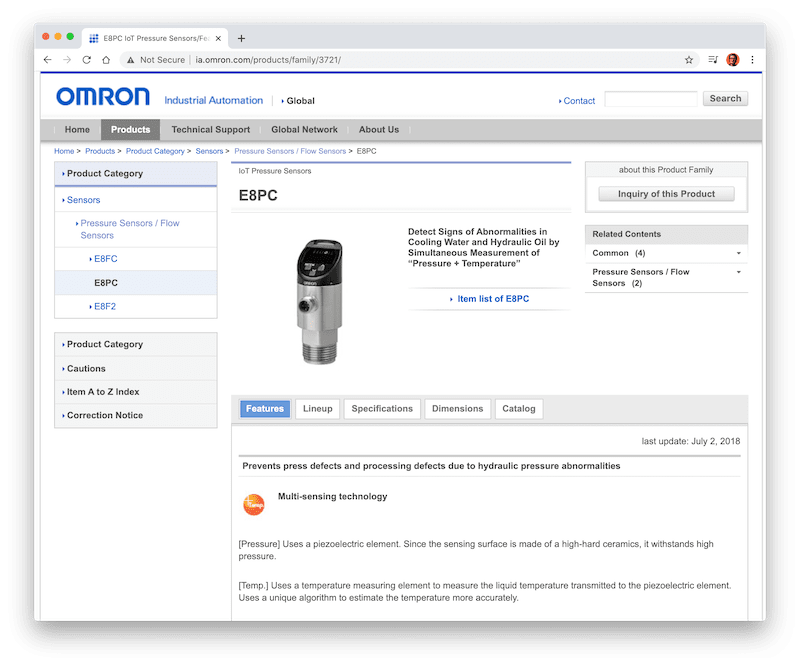
Pressure sensors are devices that measure pressure (the force required to stop a fluid from expanding) in gases or liquids. These can come in all sizes and shapes, and they are one of the most popular examples of IoT sensors mainly due to industrial applications that are fully embracing this new connectivity effort.
Pressure sensors can be of different types:
- Barometric pressure sensors, contained in most weather stations. These are meant to measure changes in atmospheric pressure.
- Gas pressure sensors meant to monitor pressure changes in gases, especially in oil, energy, and utility applications.
Though not technically pressure transducers, load cells are also a variation of pressure sensors, and can be a preferred method when it comes to measuring weight (e.g. animal weight, or the level of a tank or silo).
These types of sensors form the backbone of our gas and energy infrastructure because, without them, we wouldn't be able to monitor system pressure. Hook an IoT module to one of these and your data is ready to go on your computer screen.
Examples of IoT pressure sensors:
- The Long Range Wireless Pressure Sensor from NCD (Industrial)
- The E8PC from Omron (Industrial)
2. Light Sensors
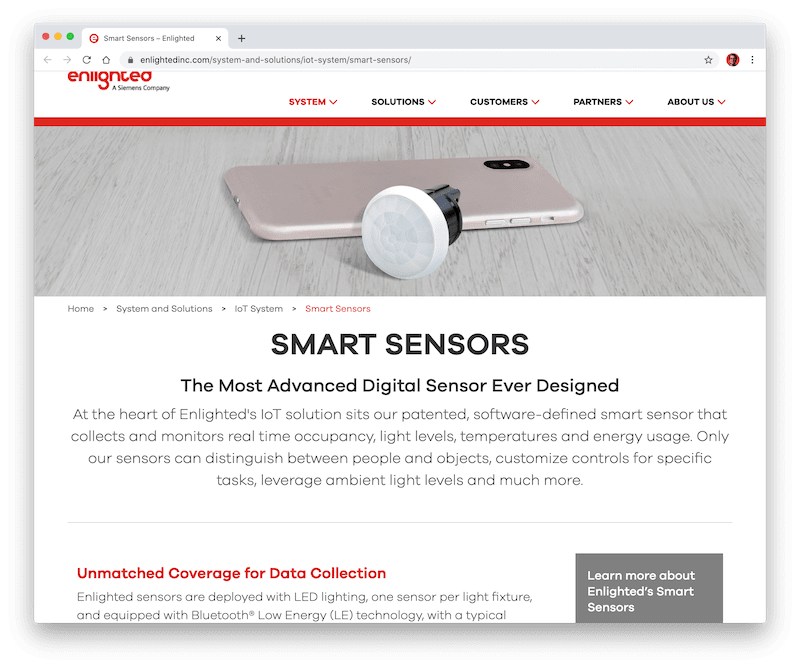
Also known as Photoelectric Devices or Photo Sensors, light sensors are more common than you'd think. These are passive photoelectric devices that convert light energy (photons) into electrical energy (electrons).
Fancy, right?
However, there's more to these devices than their working principle. Just like pressure sensors, light sensors can serve all kinds of purposes and are used heavily in brightness control, security, and even agriculture.
Keeping track of changes in light is useful for weather monitoring as well as applications in agriculture where measuring the light absorbed by the soil is key.
These sensors can also be a simpler, cost-effective alternative to motion sensors, allowing for presence detection, say, in a hotel room, warehouse, or hallway.
Seeed Studio recently published an in-depth article on the topic of light sensors, with relevant hardware examples from their own product lineup.
Examples of IoT light sensors:
- The Smart Sensors from Enlighted (Consumer & Enterprise)
- The Long Range Ambient Light Sensor from NCD (Industrial)
3. Temperature & Humidity Sensors
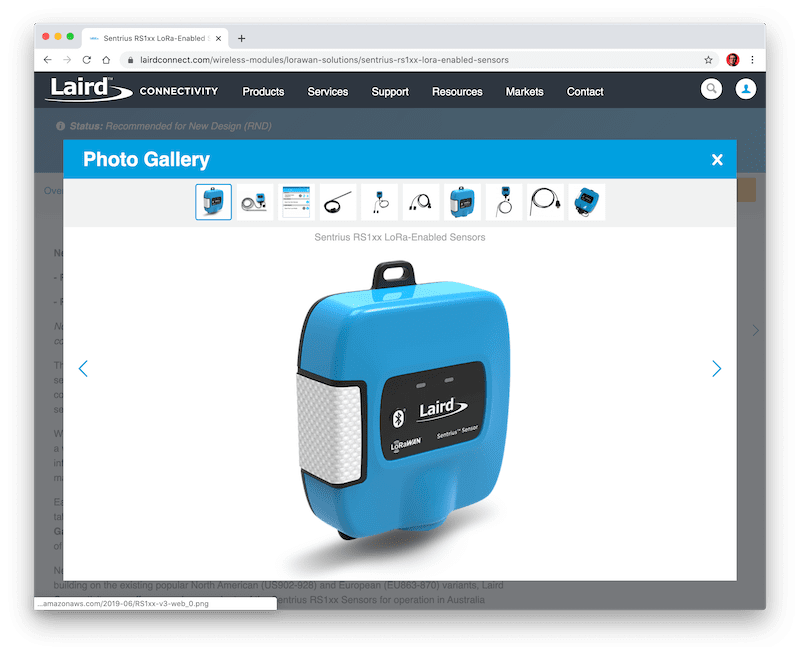
Temperature and humidity sensors are just as popular and widely used as our first two picks. They usually come bundled together in pre-made IoT modules.
On one hand, temperature sensors measure the amount of heat energy in a source and they are meant to measure temperature changes. On the other hand, humidity sensors measure the amount of water vapor in the atmosphere of various gases.
Temperature monitoring is a common use case in industrial settings where machines need to operate at a certain temperature for long periods of time.
Other use cases we typically see within our own customer base are:
- Food Safety Compliance
- Cold-chain Monitoring in Healthcare and Hospitality
- Warehouse & Inventory Management
- HVAC Systems Monitoring
Humidity is often tracked alongside temperature as well. Measuring the former is helpful with heating, air conditioning, weather stations, and even soil moisture.
Examples of IoT temperature and humidity sensors:
- The Sentrius™ RS1xx from Laird (Industrial)
- The no-brand DHT-22 2302 (DIY)
4. Gyroscopic & Acceleration Sensors
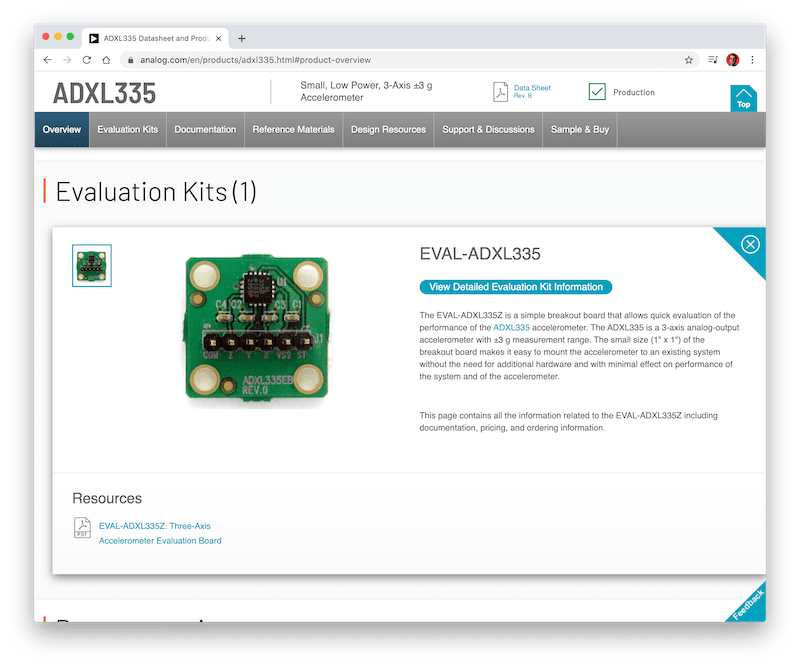
Many of you will already be acquainted with gyroscopes and accelerometers. They're the sensors that allow your smartphone to sense whether your phone is upright or in landscape mode, and they're widely used in mobile game design.
In terms of IoT applications, these little sensors are just as popular as the ones used in your phone. Even though they bear differences, most accelerometer chips also ship with a gyroscope, hence why we combined them into one section.
The difference between the two is the following:
- As reported by LiveScience:
A gyroscope is a device that makes use of Earth's gravity to help determine orientation. Its design consists of a freely-rotating disk called a rotor, mounted onto a spinning axis in the center of a larger and more stable wheel. As the axis turns, the rotor remains stationary to indicate the central gravitational pull, and thus which way is down.
- On the other hand:
An accelerometer is a compact device designed to measure non-gravitational acceleration. When the object it's integrated into goes from a standstill to any velocity, the accelerometer is designed to respond to the vibrations associated with such movement.
In IoT, accelerometers are at the heart of vibration sensors which can turn acceleration data into vibration frequencies (that's Gs into Hz!), commonly used to detect subnormal industrial machine operations.
Gyroscopes can be used to determine the moving direction of a GPS-tracked object, as well as wind direction in weather and clean energy applications.
Examples of IoT gyroscopic and acceleration sensors:
- The KX Series of Accelerometers from Kionix (Industrial)
- The ADXL335 Accelerometer from Analog Devices (DIY)
5. Proximity & Motion Sensors
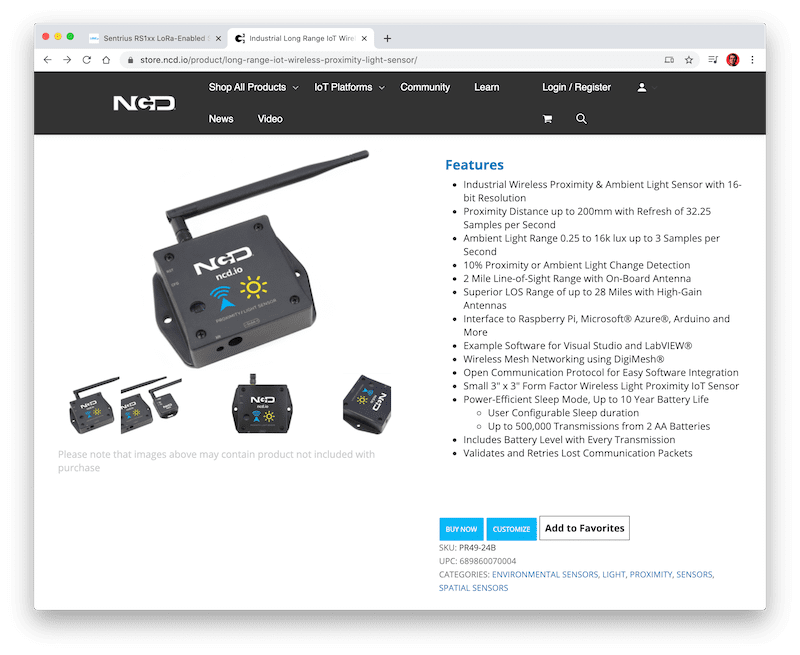
As a very common type of device, a proximity sensor is used in countless IoT applications. Proximity sensors are able to detect the presence of nearby objects without any physical contact by emitting an electromagnetic field or a beam of electromagnetic radiation (e.g. infrared) and looking for changes in the field.
Also known as range sensors, some of these devices use ultrasonic waves to measure the distance between themselves and the object detected. A few great examples of these are manufactured by Maxbotix.
Proximity sensors can be confused with motion sensors, but they are not the same thing. While a proximity sensor may be used to detect motion by measuring the distance from an object, PIR (Pyroelectric InfraRed) sensors are a good low-cost, specialized alternative for motion detection as their output is mostly binary: a 1 or a 0.
These are typically used in motion detectors which can be employed for anything from turning a light on to alerting the police in case of suspect motion.
Examples of IoT proximity and motion sensors:
- The Long Range Wireless Proximity & Light Sensor from NCD (Industrial)
- Various Proximity Sensors from Seeed (DIY & Modular)
6. Flow & Gas Sensors
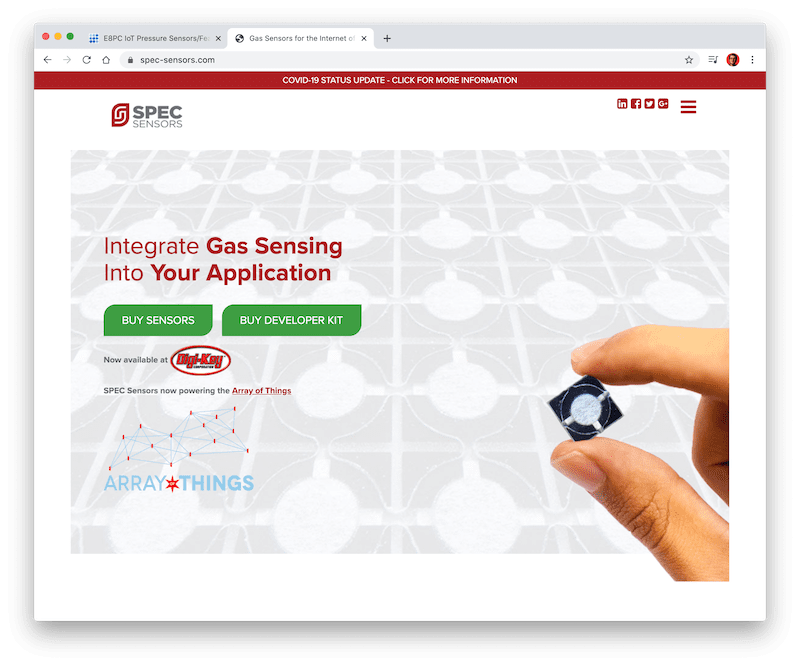
Flow sensors are devices used for measuring the flow rate or quantity of a moving liquid or gas and they're somewhat related to gas sensors which are electronic devices that detect and identify different types of gases.
Flow sensors encompass all types of devices used to measure liquid and gas flows. Use cases include industrial process monitoring, HVAC, as well as gas and water management applications. The same goes for gas sensors.
Smart metering is one of the areas affected most by flow sensors. Here, ultrasonic flow meters are paired with IoT modules to send data to a remote location.
With the advent of cellular IoT technologies like NB-IoT and LTE-M—and the obvious benefits for utility companies and end-users alike—flow, gas, and electric sensors are expected to grow significantly by 2025.
This clearly shows a strong trend in smart metering as well as an overall increase in usage among these types of sensors for industrial purposes.
Looking at gas sensors in specific, these are traditionally bulky devices that only recently turned into low-power adaptations to monitor things like air quality in local environments. The topic of air quality is further discussed at list item 11.
Examples of IoT gas and flow sensors:
- Various Flow Sensors from Sensirion (Industrial)
- Various Gas Sensors from Spec Sensors (DIY & Modular)
7. Sound Sensors
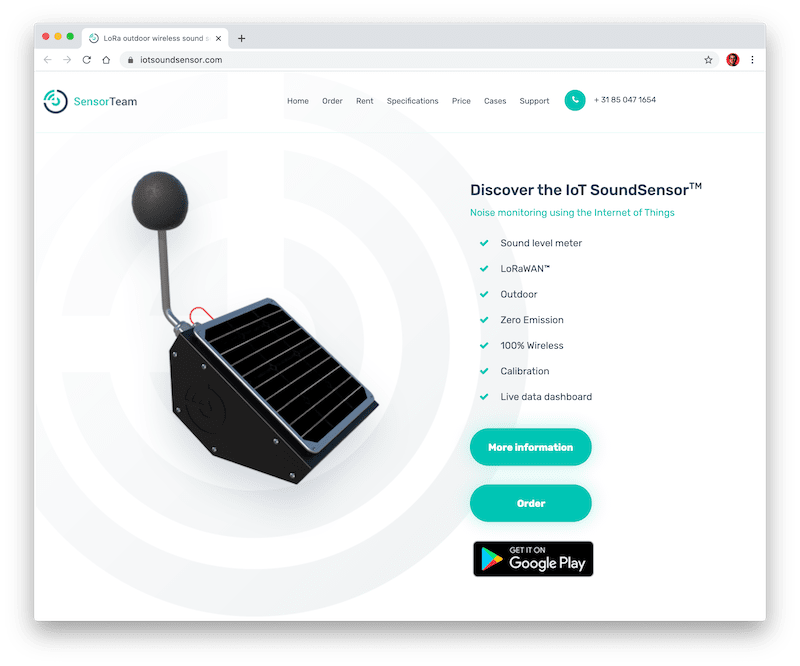
Sound sensors aren't as used as other types of sensors in our list, but they're still worth a mention due to their unique properties and interesting use cases.
First of all, what is a sound sensor?
A sound sensor is defined as a module that detects sound waves through its intensity, converting it to electrical signals. When the device detects a change in intensity, it can send the data back to your dashboard.
Simple sound sensors like the ones offered from Seeed Studio are fairly inexpensive and they can help you figure out a few different use cases. For example, detecting the presence of sound in an otherwise quiet room.
There are also sound recorders available which not only detect sound but also record it as soon as the intensity changes. That's particularly useful in security.
Lastly, an advanced use case involves the so-called Sound/Noise Level Meters; devices that assess noise across a frequency range.
These allow for more complex ambient noise metering applications.
Examples of IoT sound sensors:
- The aptly-named SoundSensor from SensorTeam (Construction)
- The Sound & Noise IoT Sensor from IoTsens (Smart Cities)
8. Moisture Sensors
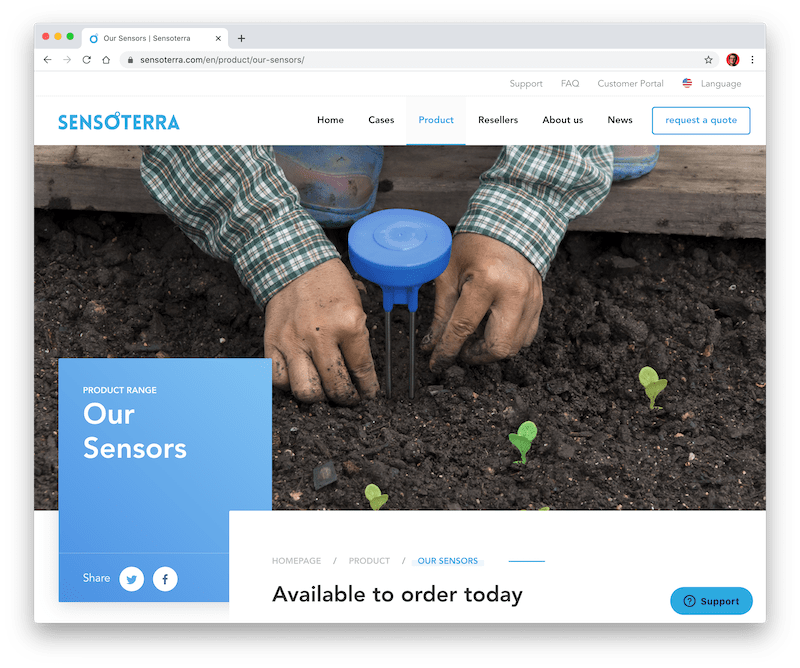
Moisture sensors are key to recent advancements in agriculture, allowing farmers to constantly monitor soil health. As AgriTech Tomorrow points out, soil conditions change constantly throughout the growing season.
Here's what they have to say about IoT soil sensors:
...because of recent developments in soil and water monitoring, the critical information is being received in real-time measurements from the field, helping farmers make faster, more accurate crop production decisions.
Most moisture sensors are single-point, meaning that they measure moisture in the soil in a singular, fixed location.
This type of sensor should be installed in multiple locations across a crop field to increase the accuracy of the measurements.
Depth also plays an important role here as the effects of irrigation can be stronger or weaker at different levels. Moisture devices are usually equipped with long probes that go deep into the soil and measure moisture at different depths.
Examples of IoT moisture sensors:
- The Wireless Soil Moisture Sensors from Sensoterra (Agriculture)
- The Long Range IoT Soil Moisture Sensor from NCD (Agriculture)
9. Image Sensors
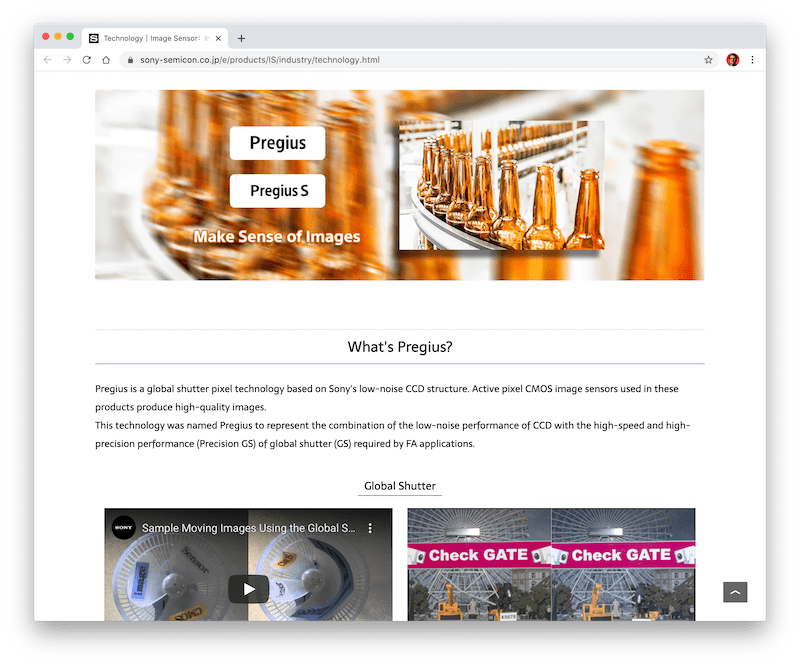
A sensor is a device gathering information about the physical world to provide a set of measurements over time. Under this same logic, we can think of a camera as a 2-dimensional optical/IR sensor providing a matrix of measurements over time.
Cameras are widely used as a sensing mechanism, from people counting applications to AI-powered pattern recognitions.
For example, a unique take on this is the PigVision technology from Asimetrix: an image-based sensor measuring pig weight in real-time based on trained AI models.
Here's a video from the explaining how the technology works:
As shown in the screenshot above, Sony is also a big proponent of these technologies in industrial, utility, and aviation settings. You can check out their Pregius image technology from the resources down below.
Examples of IoT image sensors:
10. Magnetic Sensors
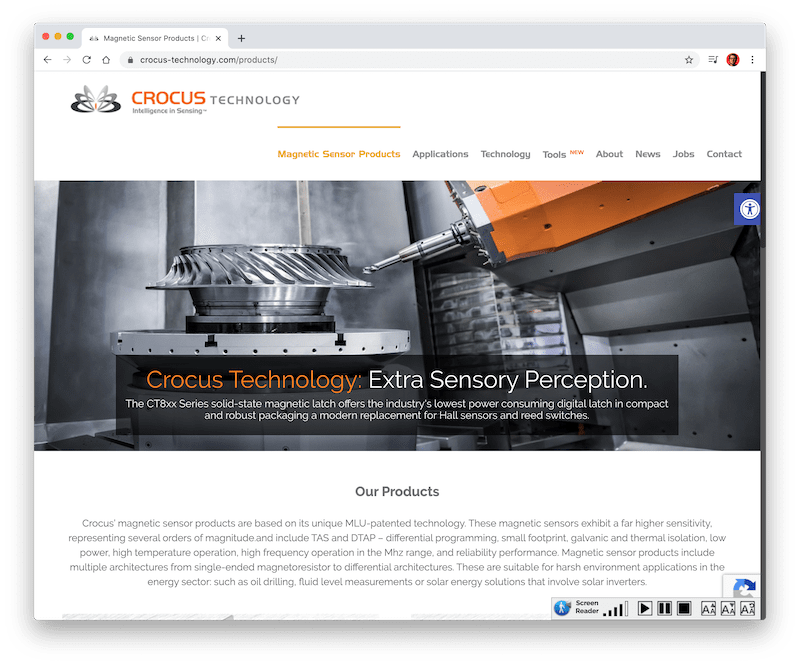
Magnetic sensors are used in both consumer and industrial applications to detect large bodies of metal such as cars, panels, housing, etc. These devices detect changes and disturbances in a magnetic field like flux, strength and direction.
There are three types of magnetic sensors typically used in IoT:
- TMR (Tunneling Magnetoresistive) Sensors
- Reed Switches
- Hall Effect Sensors
Tunnel magnetoresistance is a fairly complex quantum mechanical phenomenon so we won't get into the scientific details of it in this article.
However, TMR sensors are becoming increasingly popular for measuring mechanical displacement and motion in industrial, automotive (think automated parking and self-driving cars), and consumer applications.
Our second entry—the reed switch—is an electrical switch operated by a magnetic field. These switches can be actuated by an electromagnetic coil and they are commonly used in security systems to control the flow of electricity and trigger an action in case the presence of an unwanted visitor is detected.
Lastly, we have the hall effect sensor, a device used to measure the magnitude of a magnetic field. Diodes has a great article explaining their role in IoT.
Also, a few years back we ran an interesting project using two different magnetic sensors characterized by low power consumption and high sensitivity:
Check out the series for some hands-on action with magnetic sensors!
Examples of IoT magnetic sensors:
- Custom Magnetic Sensors from HyperTech (Asset Tracking)
- The CT8xx Series from Crocus Technology (Energy Sector)
11. Air Quality Sensors
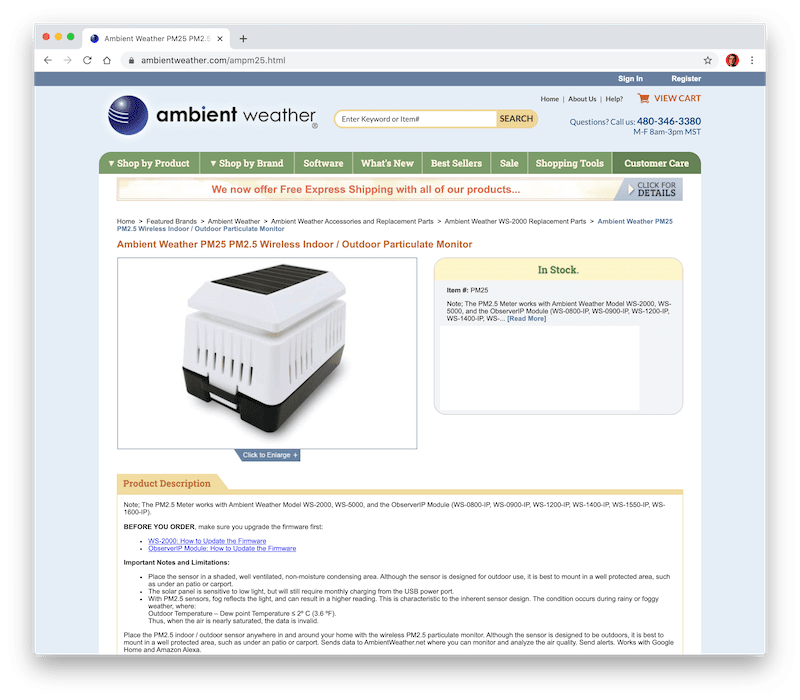
Even though air and water quality are functions of several sensor types used in conjunction, we thought they both deserved a category of their own.
The first thing that comes to mind when we talk about air quality is pollution. But how do we measure it? By using so-called Particulate Matter sensors. These are comprised of mainly two types based on size of the particles found in the air:
- PM10
- PM2.5
Particulate matter sensors that can detect the former are more common as the particles are larger (generally 10 micrometers, hence the name). Detecting fine particles that are 2.5 micrometers and smaller becomes gradually harder.
Industrial particulate matter sensors from Sensirion and other manufacturers can detect these fine particles and help with implementing air quality systems.
As discussed in previous sections, gas sensors also play a huge role in recognizing changes in the air, and they're usually embedded together with PM sensors.
Examples of IoT air quality sensors:
- Various Air Quality Sensors from ams (Industrial)
- The Ambient Weather PM2.5 Particulate Monitor (Smart Home)
12. Water Quality Sensors
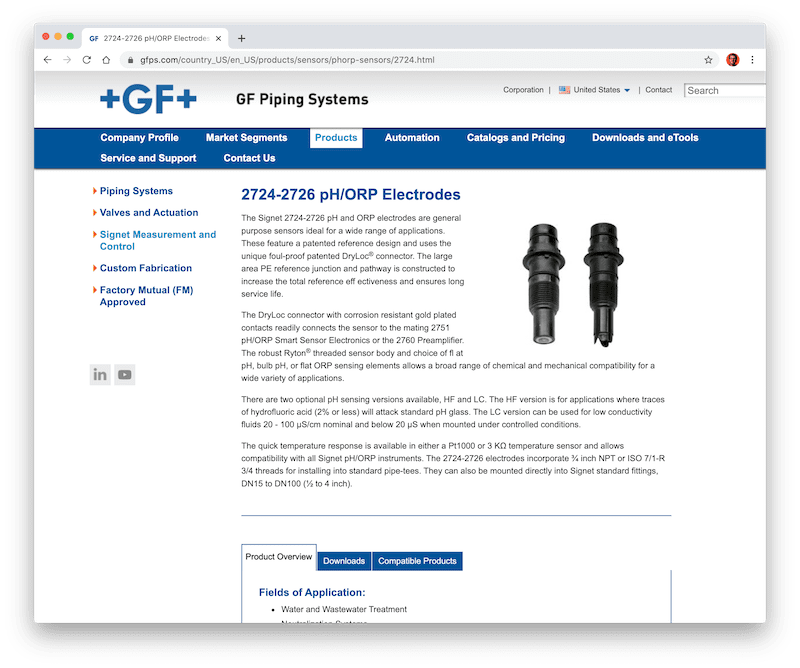
Water is something that most of us take for granted, but many populations in the world do not have clear access to this crucial resource. And if they do, its quality could be poor or outright toxic. That's where water quality sensors come in.
Like the previous section, there are several variables that contribute to water quality, some of which are subject to physical measurements via sensors like:
- pH Sensors
- Turbidity Sensors
- ORP (Oxidation-Reduction Potential) Sensors
When used in conjunction, these sensors form a complete picture of the water's quality. For example, here's what the USGS has to say about pH:
pH is a measure of the relative amount of free hydrogen and hydroxyl ions in the water. Water that has more free hydrogen ions is acidic, whereas water that has more free hydroxyl ions is basic. pH can be affected by chemicals in the water and is an important indicator of water that is changing chemically.
Based on this, pH sensors play a huge role in monitoring water quality by looking at its alkalinity. Turbidity sensors play a similar role by measuring the amount of light scattered by suspended solids in water. Less light means lower quality.
Finally, Oxidation-Reduction Potential sensors measure the ability of a solution to act as an oxidizing or reducing agent. As pointed out by Vernier, these may be used in swimming pools to measure the oxidizing ability of chlorine.
Examples of IoT water quality sensors:
- The Signet 2724-2726 from Georg Fischer (Industrial)
- The Waspmote Water Quality Module from Libelium (Various)
These were the 12 types of sensors that are most relevant in the IoT world.
If you want to learn more about the market share for each type of sensor, we recommend taking a look at the data shared from Mordor Intelligence.
IoT Sensors: The Backbone of Your IoT Solution
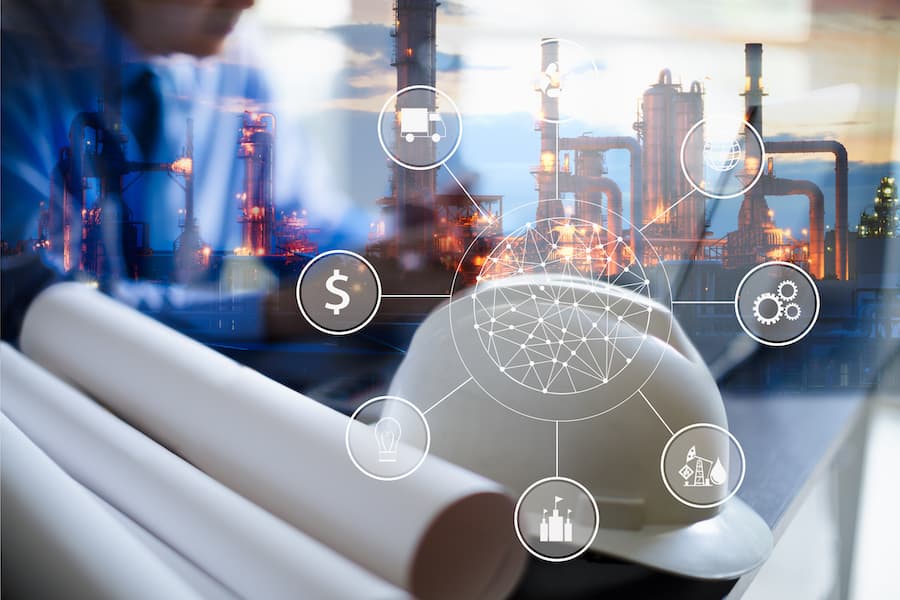
Now that we've looked at the different types of IoT sensors, all that's left to ask is why. Why do we want to connect them to the Internet?
What's the value behind the "IoT" part?
This will likely be the next question by your client, and it's one that's been asked by some of the most renowned brands in the world.
Salesforce recently ran a survey asking sophisticated customers which technologies they believed would transform their expectations of companies most.
Here's what they said:
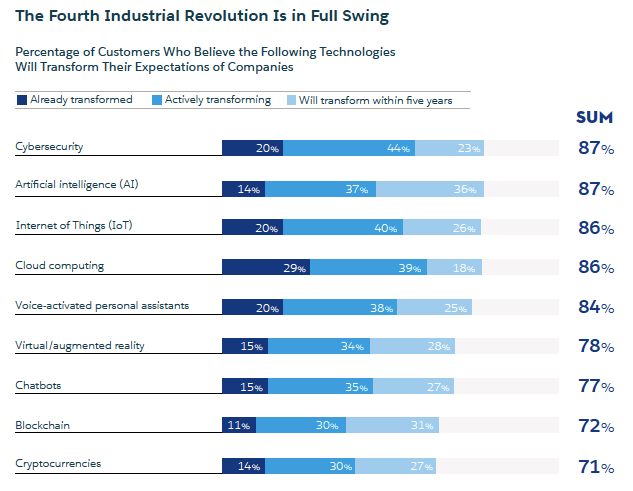
The Internet of Things is in the top three, together with technological innovations such as Cybersecurity and Artificial Intelligence.
Hiring managers also fully acknowledged the incredible changes that the IoT is already bringing to the workforce:
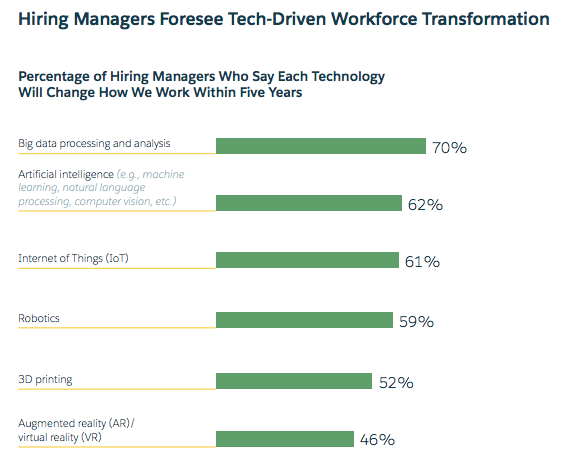
These cutting-edge technologies are fundamentally shifting the way we live and work. Combined, they form what is known as the Fourth Industrial Revolution.
Due to this mega-trend, semiconductor and sensor companies are now pushing to innovate faster than ever before, leading to an increasing diversity of things that can be "measured” and accelerating the pace at which these devices are created.
Without these "smart" sensors, it would be impossible to take a piece of machinery and connect it to the internet. They just weren't made to interact with it.
Businesses all over the world are realizing the potential of aggregating data into IoT dashboards like the ones offered from Ubidots, and they're rushing to get their machines hooked to the internet.
However, this can't be done without first understanding the possibilities and use cases enabled by each sensor type. With that said (and security issues aside), the world seems to agree on the benefits of enabling these data-driven possibilities.
And that's exactly why the "IoT" part matters—today more than ever.


